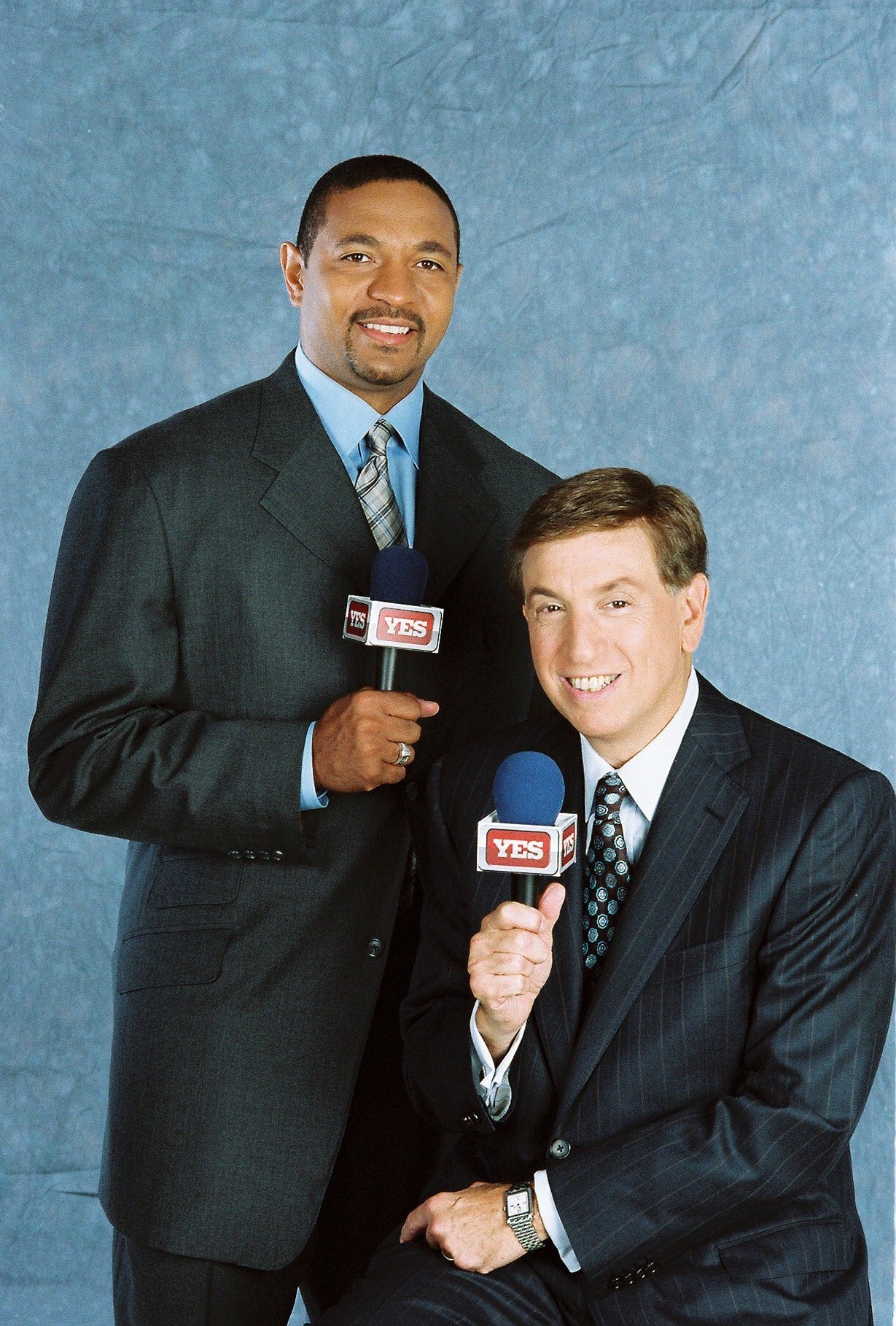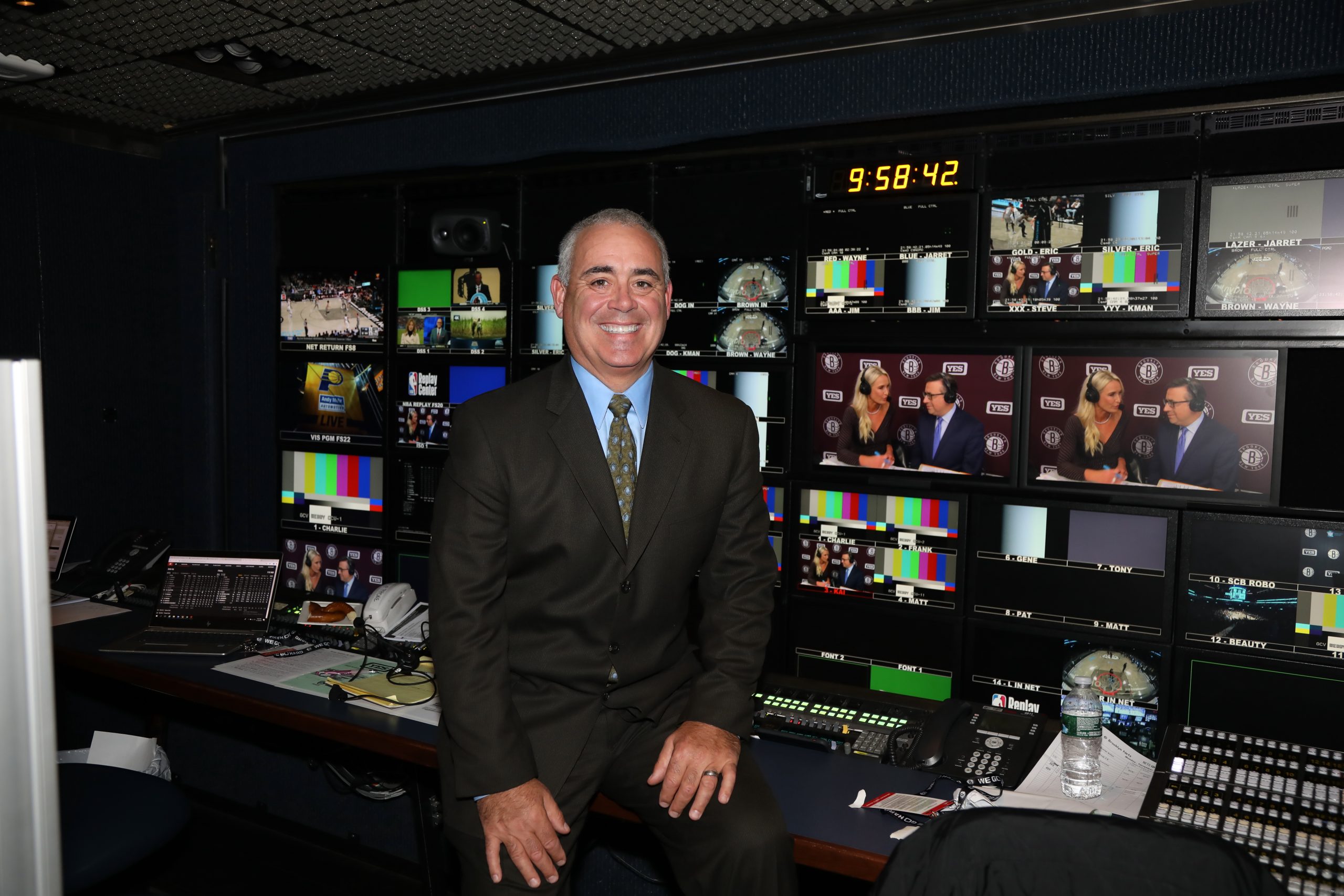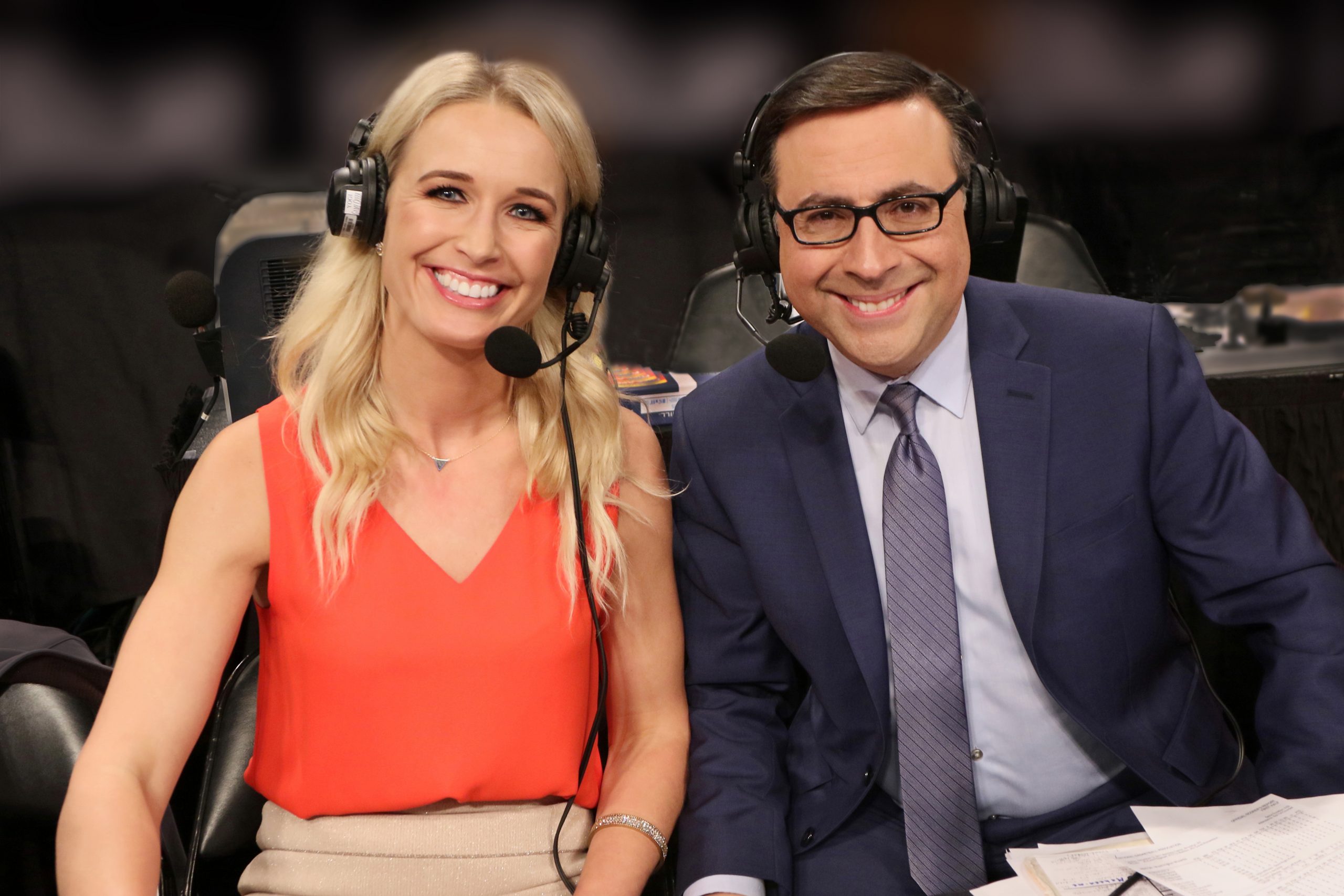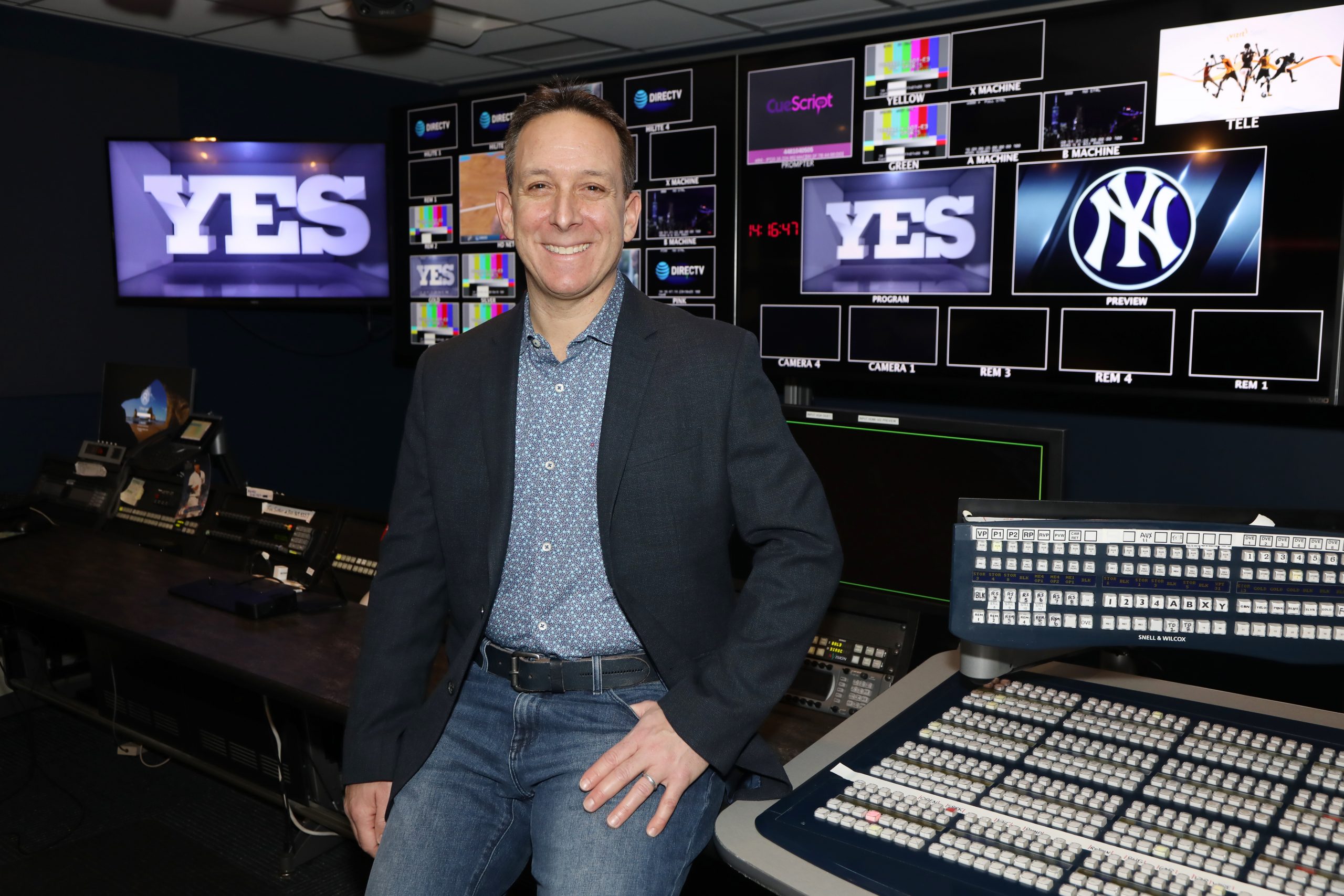YES Network Celebrates 20 Years With the NBA’s Nets
From New Jersey to Brooklyn, it has been an exhilarating ride for the broadcaster
Story Highlights
In 2002, YES Network launched on March 19 with Yankees baseball, and then, on Oct. 30, it broadcast its first New Jersey Nets game. This NBA season marks the 20th that YES Network has been home to Nets basketball. Over two decades, the network has followed the team from the Meadowlands to Newark and then, 10 years ago, across the Hudson River to Brooklyn. For YES Network, it was a huge deal, providing a viewing proposition that didn’t begin and end with Yankees baseball.
“It has been such a wonderful transition and ride from New Jersey to Brooklyn,” says Jared Boshnack, VP, production, YES Network. “Seeing the community aspects of what is actually taking place in Brooklyn and the way we’ve been able to grow this product, it’s really something else. And we feel that, toe-to-toe on a regional level, there is no better product. For us, it’s just night in, night out bringing the enthusiasm, the energy. We have Mike Webb [VP, broadcast operations and engineering, YES Network] and his team on the operations side giving us all the tools we need, and producer Frank DiGraci on his side with the talent and the production core that surrounds him is just the best in the business.”
Webb recalls the pivot from Yankee baseball to Nets basketball as well as the steep learning curve.
“The hardest thing to get adjusted to was the fact that you were doing this every day,” says Webb. “The home games were fairly easy, but the road games were new to navigate because we had to learn the NBA Visiting Telecast Program and how you ordered things through the rate cards and so forth and so on. It was all about learning those pieces of the puzzle, but it was fun.”
In year two, DiGraci joined the team as producer, having served as Nets producer for MSG Networks for four years.
“I knew the players, I knew [announcer] Ian Eagle, so I just had to learn about everyone at YES,” he recalls. “And I remember two things about when we started. First, when the graphics came up for the Yankees game, we were like, ‘This is real.’ There were a lot of doubters in the marketplace, especially from the competition, but that graphic package popped, and we knew right away this is not going [away]. [Second,] I remember how every single person there was just so nice, as John Filippelli [president, production and programming, YES Network] did not hire any jerks. It was almost like that was his mantra: ‘I’m gonna build this from scratch, and I’m gonna have good people.’”
DiGraci particularly appreciated the amount of attention the Nets production team received from YES.
“The Nets were, and are, extremely important to the network,” he says. “There was definitely a feeling of importance, whereas, to be honest, at MSG Network and SportsChannel, the Nets were just one of seven teams. At YES, the shows got more attention, more equipment, more facilities, a full-time studio presence, a full-time pregame, halftime, and postgame.”
Only the Best Talent
When Filippelli joined the YES Network, he brought an eye for talent, developed at national networks, and immediately helped YES Network both bring in and develop top-notch talent across the board.
“We started with Ian Eagle, who came over from SportsChannel/Fox Sports New York,” DiGraci recalls. “And then we had Marv Albert for six years. Spero Dedes started with us, and he went national. Ryan Ruocco started with us and went national. Mark Jackson is another example: three months after finishing with us, he was doing the NBA Finals for ABC. Michelle Beadle started with us as a reporter. Now Michael Grady is one of the best in the country and getting his chance. And [current full-time analyst] Sarah Kustok has done some national reporting.”
The key to developing a good broadcast team, DiGraci believes, is having a family atmosphere and finding people who are comfortable with the production team. Finding the right announcer often begins with finding people who are generous and caring, people who make a good teammate.

From the early days of YES Network, announce team Mark Jackson (left) and Marv Albert (Photo: E.H. Wallop/YES Network)
“That translates to their being comfortable with each other and then comfortable on the air. Our goal is to have viewers feel as though the announcers are watching the game with them. With Sarah and Ian, it feels like you’re just watching the game, and they give you the feeling you are all in it together.”
This year’s full broadcast team comprises Eagle and Ruocco on play-by-play; Kustok and former Net Richard Jefferson as analysts; courtside reporter Grady; studio hosts Bob Lorenz, Nancy Newman, and Chris Shearn; and studio analyst Frank Isola. “Ian Eagle has won six straight play-by-play Emmys. Sarah has won two straight analyst Emmys. They are the first play-by-play and analyst covering the same team at the same network to win in the same year, and they’ve done it back-to-back.”
DiGraci says Kustok does more homework than any analyst in the league when it comes to watching film, studying rosters, and talking to coaches.
Key to great success on-air? The relationships off-air, and establishing that begins with the interview process.
“What kind of person are you? Are you generous, caring? Will you be a good teammate?,” DiGraci explains, noting that, if the answers are yes, “the chemistry happens and we can have fun on the bus, on the planes, telling stories and building it that way. And that translates to the air.”
New City, Brand-New Home
The Nets’ move to Brooklyn gave YES Network an opportunity to get in on the ground floor of construction of Barclays Center. The NBA puts a priority on making sure broadcasters’ needs are met when venues are built.
“We were walking around that place when it was still under construction,” says Webb. “It was great that we were brought into the process early and that we didn’t have to go in afterwards and try to figure it out. They listened to our suggestions.”
Locating Barclays Center in the middle of an established neighborhood required innovation. Topping the list was installation of two freight elevators that could handle 80,000 lb., enough to hold an 18-wheel semi. The elevators led to an 80-ft. turntable that the truck would drive onto and be spun around to access other parts of the lower-level compound without tricky driving.
“I never thought that would work as well as it has,” says Webb. “I loved going the games out in the Meadowlands, but the move to Brooklyn reinvigorated us, reinvigorated the franchise. It really was a shot in the arm.”
It also allowed the network to reinvent coverage and elements. One of the touchstones for Nets broadcasts since the move to Brooklyn 10 years ago has been “Wear Brooklyn At?”, a nightly feature that shows pictures of fans around the globe wearing Nets gear. DiGraci says he was inspired by the Portland Trailblazers who do something similar.
“Wear Brooklyn At? is a play on the Biggie song,” he explains, adding, “I’ve gotten pictures from every place on earth, from all seven continents, and everything you can imagine as far as landmarks. Brooklyn is its own brand, a global name, and that has definitely rejuvenated the fanbase.”
The move to Brooklyn also gave the team access to theatrical lighting, and it became the third to use such lighting (the first two were the Los Angeles Lakers and New York Knicks).
“It gives a performance feel and also makes it pop on television,” says DiGraci. “The players pop, the court pops. You don’t see that far back in a wide shot, so it looks like you’re in a theater. I think we’re still more theatrical than the other two, as they have pulled back and are now brighter farther back into the stands. We definitely think it gives a visual feel on television that’s beneficial to the viewer.”
YES Network has evolved a lot technically during the past 20 years. It transitioned to HD in 2005 and has been through various tape formats. But DiGraci says the most impactful improvement has been the advances in super-slo-mo playback.
“We went from one machine to two machines, and now it’s on every camera,” he says. “Every tape machine can be 2X, 4X, 8X, whatever you want to pick. It’s such an innovation because the game is so fast and then to slow it down and see their faces and see their hair bobbing and the sweat coming off of them. The detail and the clarity just blows me out of the water.”
DiGraci also mentions the May 2, 2002, First Round Game 5 between the Nets and Indiana Pacers. Pacers legend Reggie Miller hit a half-court buzzer beater at the end of regulation, and it was later determined that the shot was late.
“That spurred the league to implement instant replay,” says DiGraci. “Instant replay in the NBA started with the first game on YES on Oct. 30, 2002. The policy was for the referees to come to a monitor at the table provided by the home truck and I would route the different angles they wanted to see while talking to the referees at the same time our director was covering for us on the air.”
The system also allowed DiGraci to give NBA referee Bennett Salvatore a quick lesson on TV-replay lingo. “He came over to look at a play, and I said, ‘Ok, sir, here you go. Roll X.’ And he said, ‘Don’t you tell me to relax!’
Fast forward to Feb. 23, 2009, with Philadelphia Sixers at the Nets. Devin Harris beat the buzzer on a half-court shot, and the referees ruled it no good.
“They come to our monitors, and we showed it was good by two frames,” DiGraci says. “It was the first time Instant Replay was used to change a call from ‘no good’ to ‘good.’ The NBA now has a replay center in Secaucus, NJ, so we are out of the mix, but we will always have that one night in 2009 when an NBA official told me after the game, ‘Your replays got the Nets the win.’”
Through all the tech changes, there has been one key technology provider: Game Creek Video.
“Game Creek has been our truck provider since day one, and it’s a fantastic partnership,” says Webb. “We’re on the third home mobile unit that Game Creek has built for us. Each of those trucks also do marquee events like the World Series for national networks. Our mobile units are always state-of-the-art.”
Championship Expectations
This year, the Nets and YES Network have championship expectations.
“I’ve been telling our team to enjoy the journey,” says DiGraci. “Every night, you’re seeing something that we haven’t seen before; let’s enjoy it. James Harden is making passes we haven’t seen since Jason Kidd. And Kevin Durant, when healthy, I would say, is the greatest Net who has ever played. They’re breaking records at this franchise that I’ve never seen before.”
One of the things the Nets team has been looking to do this year is mimic the YES Network team by going deeper.
“We have an incredibly deep roster and an incredibly deep bench,” notes Boshnack, who began his YES career doing graphics for Nets games midway through the first season. “We’re fortunate that we have mentors like Mike and Frank.”




